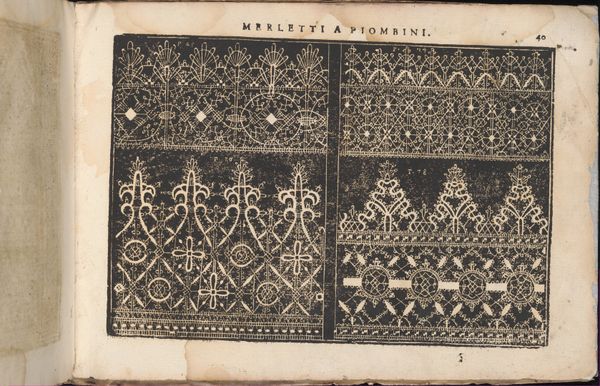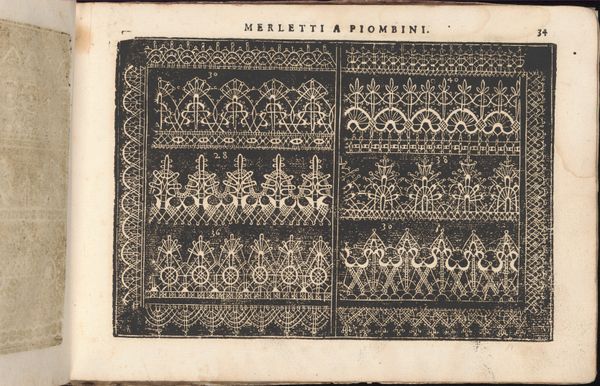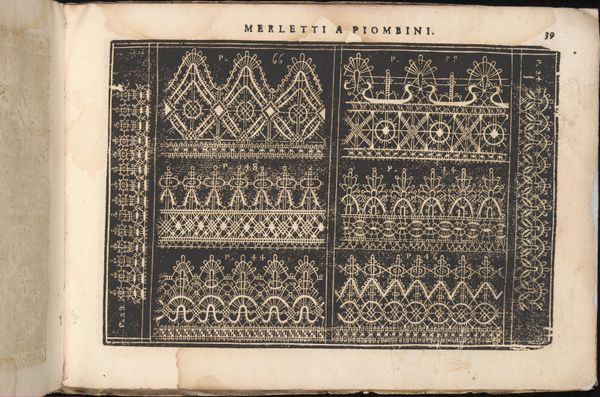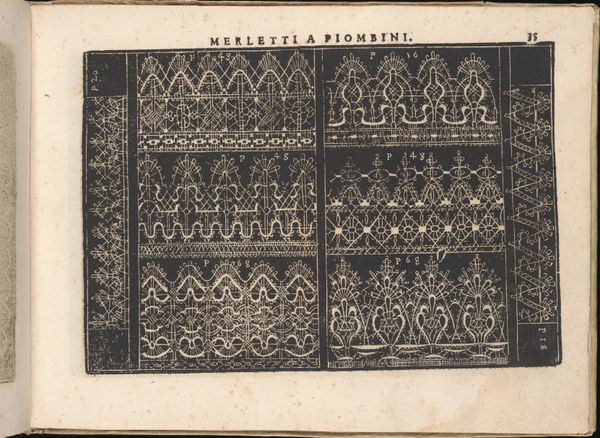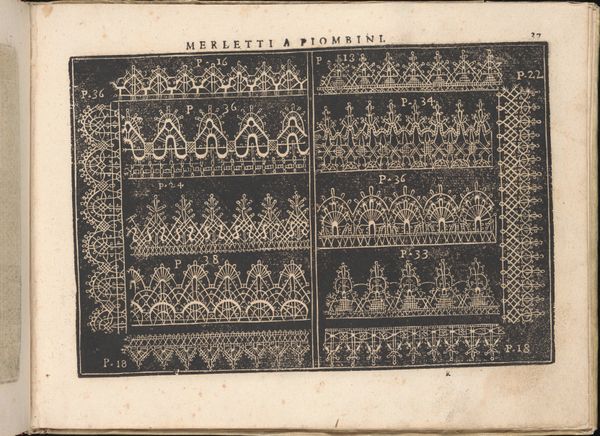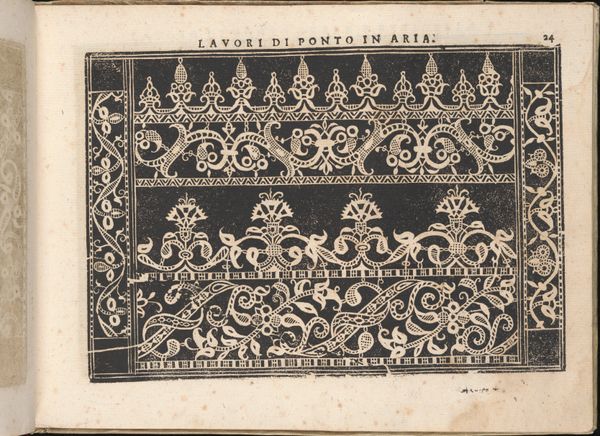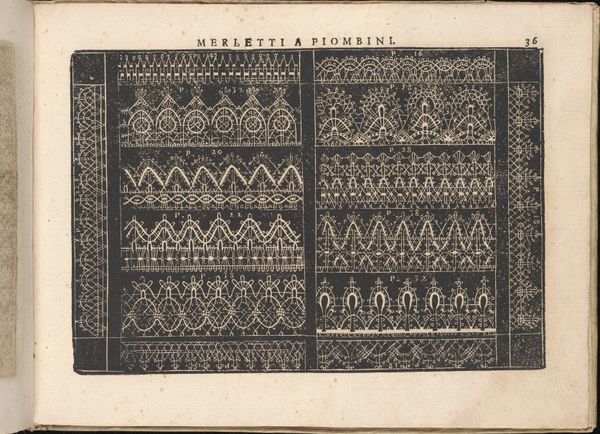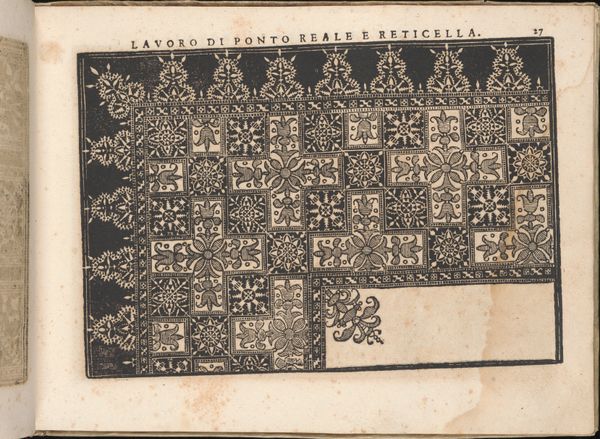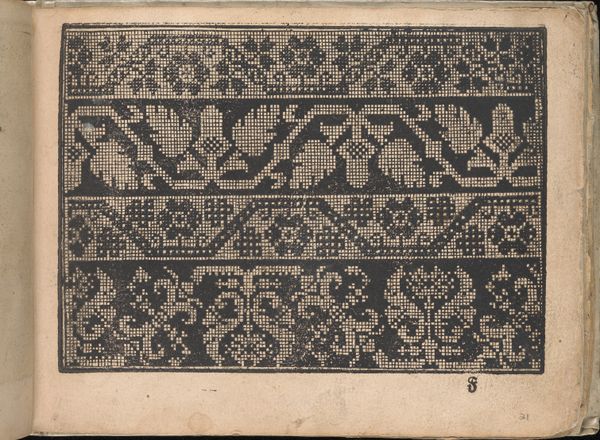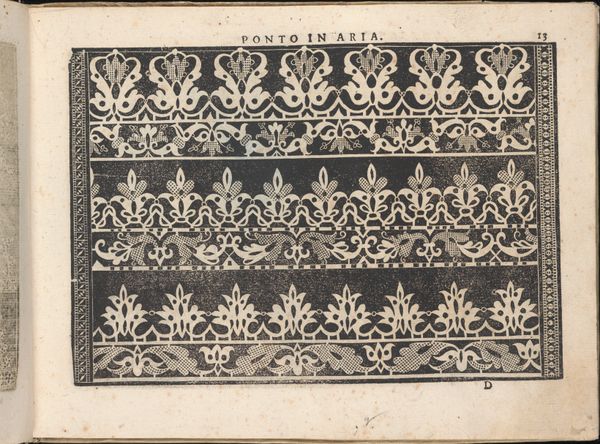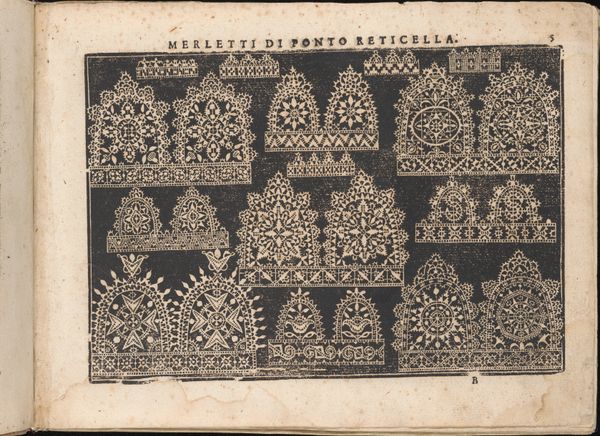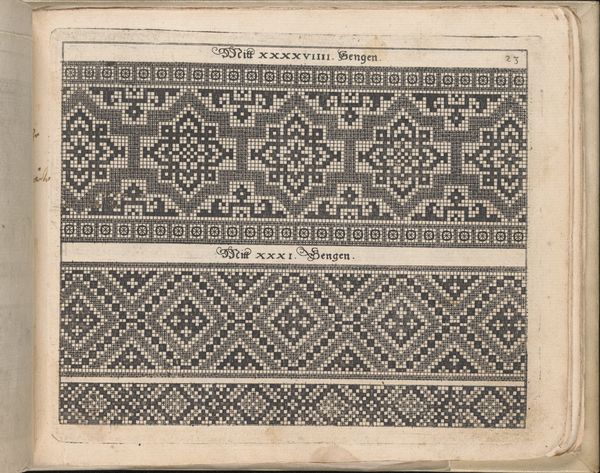
Teatro delle Nobili et Virtuose Donne..., page 38 (recto) 1616
0:00
0:00
drawing, print, etching, textile
#
drawing
# print
#
etching
#
textile
#
geometric
#
italian-renaissance
Dimensions: Overall: 7 1/2 x 10 7/16 in. (19 x 26.5 cm)
Copyright: Public Domain
Editor: Here we have "Teatro delle Nobili et Virtuose Donne..., page 38 (recto)" by Isabella Catanea Parasole, made in 1616. It's an etching, displaying intricate geometric designs. The level of detail is incredible. What strikes me is how something intended for textile production becomes art itself. How do you interpret this work? Curator: I see this not merely as a pattern for textiles but as a document reflecting labor and material culture. The etching allows for the mass dissemination of these designs. Consider the socio-economic implications. Who is producing the lace? Who is consuming it? This print makes this production accessible, albeit in a mediated way. What does the mechanization of design offered by print mean for artisanal crafts? Editor: That’s a great point. It democratizes design, but perhaps also devalues the handcraft itself? The etching itself required a skilled etcher, someone probably very familiar with textile work. Curator: Precisely. And look closely at the inscription "Merletti a Piombini". Where is Piombini and what material relations defined that city’s textile work at the time? Consider, too, the *means* of producing this image: the copper plate, the acid, the printing press. Each step entails material conditions and human labor. Editor: So you are saying we should analyze art using the means and conditions of its making as well as its intended function? It's fascinating to think about textile production from over four centuries ago through this lens. Curator: Exactly! How materials and making both define and defy established artistic hierarchies. Considering the labor behind its creation helps us better understand it as a visual object. Editor: This has really shifted my perspective on what this artwork represents. Thanks! Curator: Indeed. By engaging in close analysis of art through material investigation, we recognize production methods and manufacturing.
Comments
No comments
Be the first to comment and join the conversation on the ultimate creative platform.
